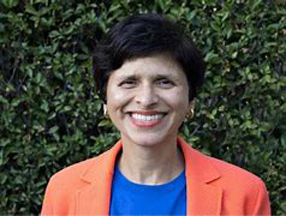
MARYLAND (TIP) : In a first-of-its-kind surgery, a team including an Indian American plastic surgeon has successfully removed a rare cancerous tumor wrapped around the spine and spinal cord of a 19-year-old woman – through her eye socket (orbit).
Although surgeons use a “transorbital” approach to access tumors in the brain and sinuses, this is the first time it has ever been used to remove a spinal tumor, according to a University of Maryland Medical Center press release.
In this case, the young woman had a slow-growing developmental bone tumor called a chordoma in her spine. Only about 300 chordomas are diagnosed in the United States every year.
The patient, who has no evidence of cancer, required multiple surgeries and received extraordinarily complex care from a multidisciplinary team led by Mohamed A.M. Labib, a UMMC neurosurgeon and Assistant Professor of Neurosurgery at the University of Maryland School of Medicine (UMSOM). The team included Indian American facial plastic and reconstructive surgeon, Kalpesh T. Vakharia,
Dr. Labib developed the novel surgical plan to remove the spinal tumor after exploring the transorbital approach in the Department of Neurosurgery’s Skull Base 360° Laboratory using cadavers. He called the eye socket, “the third nostril,” in preliminary research looking at new ways to access hard-to-reach skull base tumors published in the Journal of Neurosurgery in October 2023.
In addition to the three surgeries last spring, the patient, Karla Flores, now 20, of Rosedale, MD, was treated with proton radiation therapy to destroy any lingering cancer cells. A neurosurgeon also fused the C1 and C2 vertebrae in her neck to stabilize the spine.
In other transorbital procedures, surgeons have made incisions next to or above the eye. In this case, Dr. Labib worked with Dr. Vakharia, who carefully cut through the conjunctiva, the transparent membrane protecting the eye, inside the lower eyelid without disturbing the eye. That process also involved making an incision inside the patient’s mouth. Dr. Vakharia removed the bottom of the eye socket, and a portion of the cheek bone, to carve out a large enough pathway for surgeons to thread surgical tools into the sinus to reach the cervical spine.
“We wanted to develop a surgical plan where there would be no external scars and it would be impossible to tell that the patient even had surgery,” said Dr. Vakharia, Chief of Facial Plastic and Reconstructive Surgery in the Department of Otorhinolaryngology-Head and Neck Surgery and Director of the Facial Nerve Center at UMMC and an Associate Professor of Otorhinolaryngology-Head and Neck Surgery at UMSOM.
Working in tandem with Dr. Andrea M. Hebert, a head and neck surgeon and an Associate Professor of Otorhinolaryngology-Head and Neck Surgery at UMSOM, Dr. Labib was able to drill through bone in the vertebrae to access the tumor and painstakingly dissect it, using a variety of surgical instruments.
After the tumor was removed, Dr. Vakharia rebuilt the bottom of the eye socket using a titanium plate and rebuilt the cheek with bone from the patient’s hip. He said of the experience, “It was amazing to have had the opportunity to be part of surgery that had never been done before.”




Be the first to comment